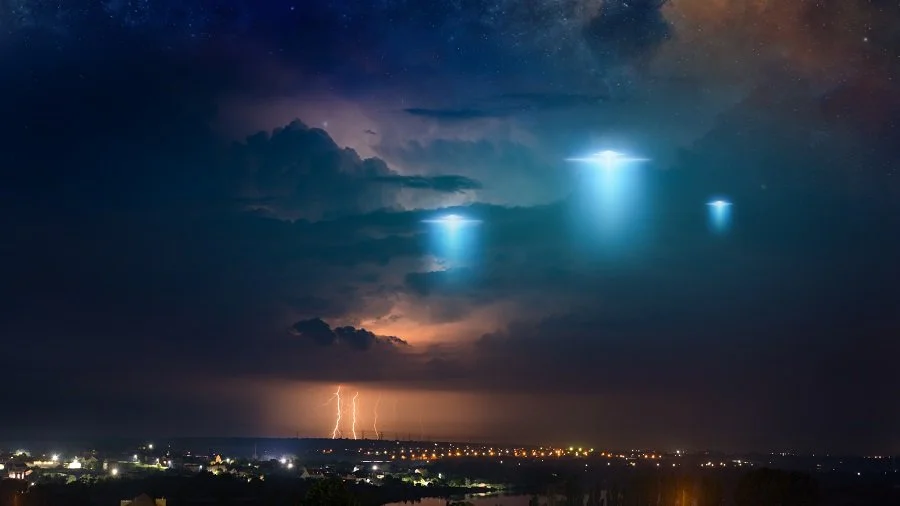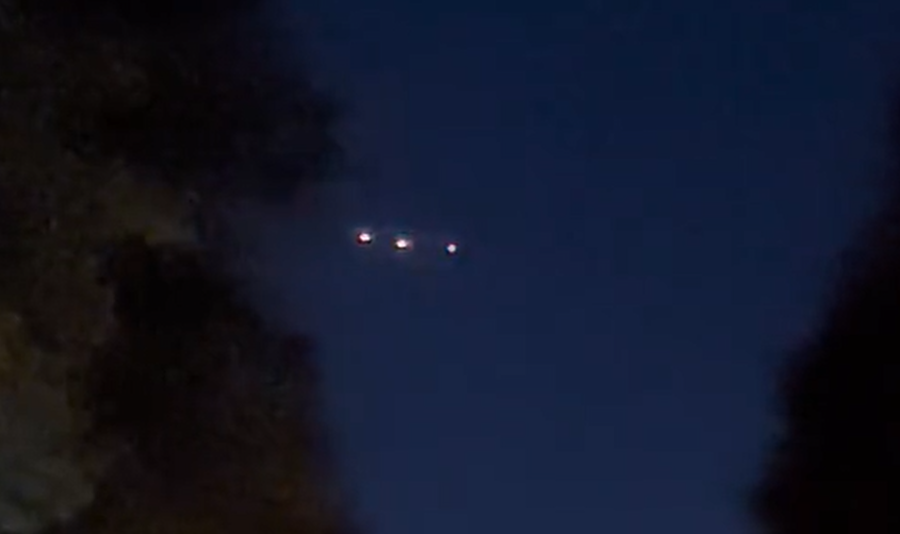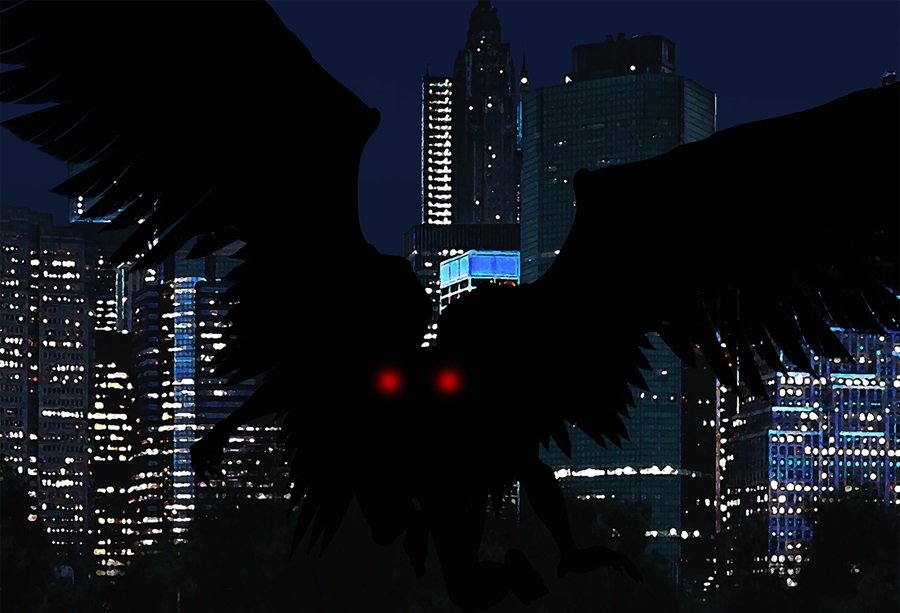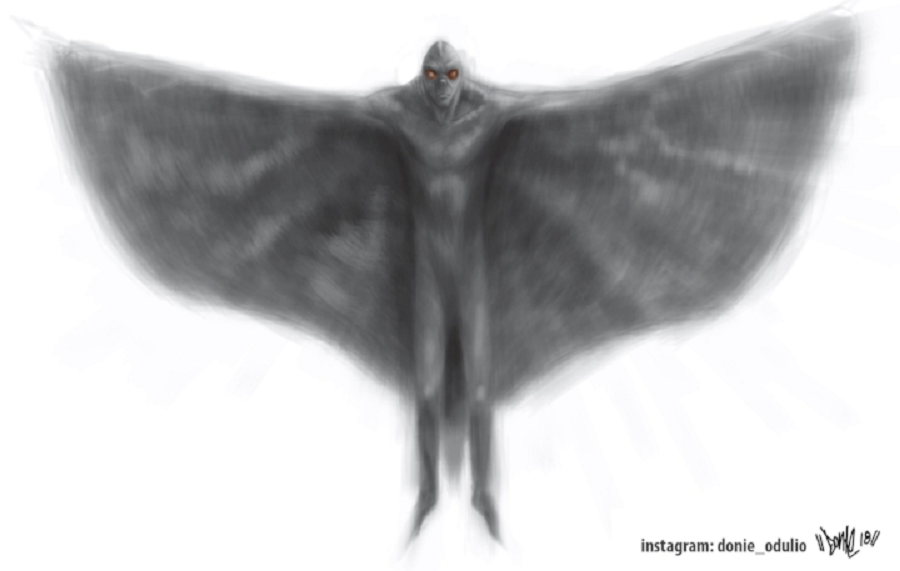"Unidentified Aerial Phenomena Reporting is Increasing," Says Latest Government UFO Report
The Office of the Director of National Intelligence (ODNI) released its 2022 Annual Report on Unidentified Aerial Phenomena this month, which noted that the reporting of such phenomena among government agencies has increased since the release in 2021 of their preliminary assessment report.
Unidentified Aerial Phenomena, or UAP, is the current government nomenclature for UFOs.
Previously, 144 reports spanning from 2004 to 2021 were included in the preliminary report.
Since then, 247 new reports and another 119 reports that were either since discovered or reported after the preliminary assessment’s time period have been received.
In total, 510 reports have been received as of August 30th, 2022.
The ODNI and the All-domain Anomaly Resolution Office (AARO) have assessed that "the observed increase in the UAP reporting rate is partially due to a better understanding of the possible threats that UAP may represent, either as safety of flight hazards or as potential adversary collection platforms, and partially due to reduced stigma surrounding UAP reporting."
This increase in reporting is “enabling a greater awareness of the airspace and increased opportunity to resolve UAP events,” the report reads.
AARO was formed in July of 2022 in an effort to expand the scope of the previously planned Airborne Object Identification and Management Group (AOIMSG).
In a press release that month, the Department of Defense (DoD) said:
The mission of the AARO will be to synchronize efforts across the Department of Defense, and with other U.S. federal departments and agencies, to detect, identify and attribute objects of interest in, on or near military installations, operating areas, training areas, special use airspace and other areas of interest, and, as necessary, to mitigate any associated threats to safety of operations and national security. This includes anomalous, unidentified space, airborne, submerged and transmedium objects.
The AARO Executive Council (AAROEXEC), led by Under Secretary of Defense for Intelligence & Security (USD(I&S)) Ronald Moultrie, will provide oversight and direction to the AARO along these primary lines of effort:
1. Surveillance, Collection and Reporting
2. System Capabilities and Design
3. Intelligence Operations and Analysis
4. Mitigation and Defeat
5. Governance
6. Science and Technology
In the 2022 Assessment Report, the ODNI appears hopeful that AARO will "facilitate more coordinated UAP efforts, resulting in greater attribution of UAP.”
Limited data on the UFO phenomenon has hindered progress so far, but "the establishment of AARO—with its broad scope of authorities and responsibilities, and its replacement of the Unidentified Aerial Phenomena Task Force (UAPTF)—will allow for increased coordination of efforts against the UAP problem set."
This emphasis on the identification of unexplained phenomena in U.S. airspace comes amid heightened fears of incursion by foreign adversaries.
"UAP events continue to occur in restricted or sensitive airspace, highlighting possible concerns for safety of flight or adversary collection activity," the report reads. "We continue to assess that this may result from a collection bias due to the number of active aircraft and sensors, combined with focused attention and guidance to report anomalies. AARO, in conjunction with [the National Intelligence Manager for Aviation (NIM-Aviation)] and the [Intelligence Community (IC)], will continue to investigate any evidence of possible foreign government involvement in UAP events."
The 2022 report, which includes a classified version with additional information for high-level government officials, comes in response to a requirement established in Section 1683 of the National Defense Authorization Act for Fiscal Year 2022.
This is a continuation of efforts taken by the Senate Intelligence Committee in 2020 to establish government protocols for the investigation of UFOs.
These efforts appear to have led to an increase in potential object identifications and the recognition of seemingly anomalous phenomena, despite the lack of “detailed data” provided in many reports.
As stated in the 2022 report, "the majority of new UAP reporting originates from U.S. Navy and U.S. Air Force aviators and operators who witnessed UAP during the course of their operational duties and reported the events to the [Unidentified Aerial Phenomena Task Force (UAPTF)] or AARO through official channels. Regardless of the collection or reporting method, many reports lack enough detailed data to enable attribution of UAP with high certainty."
AARO's initial analysis and characterization of these new reports, which was "informed by a multi-agency process," has identified 195 of the 366 newly received reports as exhibiting unremarkable characteristics.
Of these reports:
26 were characterized as Unmanned Aircraft System (UAS) or UAS-like entities;
163 were characterized as balloon or balloon-like entities; and
6 were attributed to clutter.
However, the report was clear in emphasizing that "initial characterization does not mean positively resolved or unidentified. This initial characterization better enables AARO and ODNI to efficiently and effectively leverage resources against the remaining 171 uncharacterized and unattributed UAP reports."
Perhaps most interestingly, the report reads, "Some of these uncharacterized UAP appear to have demonstrated unusual flight characteristics or performance capabilities and require further analysis."
Unusual flight characteristics and performance capabilities have been at the forefront of the UFO discussion within government circles since the subject's public resurgence several years ago.
Included in the National Defense Authorization Act for Fiscal Year 2022 was a directive to "account for characteristics and performance of unidentified aerial phenomena that exceed the known state of the art in science or technology, including in the areas of propulsion, aerodynamic control, signatures, structures, materials, sensors, countermeasures, weapons, electronics, and power generation; and [...] provide the foundation for potential future investments to replicate any such advanced characteristics and performance."
The UFO phenomenon is something that Congress has been taking seriously of late, and the National Defense Authorization Acts of the past few years have come in the wake of low congressional confidence in the DoD’s investigative efforts into UFOs.
In a report on the National Defense Authorization Act for Fiscal Year 2023, the Select Committee on Intelligence noted, "At a time when cross-domain transmedium threats to United States national security are expanding exponentially, the Committee is disappointed with the slow pace of DoD-led efforts to establish the office to address those threats.”
What progress will be made in understanding the UFO phenomenon remains to be seen, but it certainly seems as though the DoD is responding to the criticisms of their investigation.
Following publication of the 2022 Annual Report on Unidentified Aerial Phenomena, Pentagon Press Secretary Air Force Brig. Gen. Pat Ryder issued a statement saying, “Analyzing and understanding the potential threats posed by UAP is an ongoing collaborative effort involving many departments and agencies […] The safety of our service personnel, our bases and installations, and the protection of U.S. operations security on land, in the skies, seas, and space are paramount. We take reports of incursions into our designated space, land, sea, or airspaces seriously and examine each one.”
To report your own encounter with the impossible, reach out to us directly at the Singular Fortean Society through our contact page.
If you enjoyed this article and would like to support the Singular Fortean Society, please consider becoming an official member by signing up through our Patreon page—membership includes a ton of extra content and behind-the-scenes access to the Society’s inner workings.






















